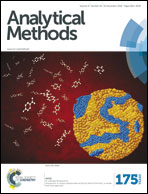Comparison between two enzymatic methods for glycated albumin
Abstract
Glycated albumin (GA) has attracted considerable interest as an alternative laboratory marker for glycated haemoglobin (A1C). GA reflects a short-term glucose monitoring, and it is not influenced by haemoglobin metabolism. Recently, there have been reports of new enzymatic methodologies for GA measurement. The aim of this study was to perform a comparison between two GA enzymatic assays commercially available in Brazil (Crystal Chem® and Diazyme®) with samples from adult patients with and without diabetes (N = 85), following CLSI recommendations. For the study, we assessed the diabetic status of patients according to their A1C levels, and we excluded those with clinical conditions that could interfere with GA or A1C levels. We observed a very strong and significant correlation (R = 0.91, p < 0.001) between the methods. The Bland–Altman plot showed a good overall agreement between the GA results (1.2% ± 2.45%; mean of absolute differences ± SD), and the Passing–Bablok regression indicated no differences between the assays. The Diazyme® GA kit presented a lower analytical imprecision (CV% inter = 8.7%) than Crystal Chem® (CV% inter = 10.0%). GA and A1C showed a moderate correlation when measured by the Diazyme® or Crystal Chem® kits (R = 0.71 and R = 0.63; p < 0.001, respectively). To the best of our knowledge, this is the first study to evaluate the Crystal Chem® kit. Diazyme® and Crystal Chem® GA assays showed a good correlation with a small difference. The association between GA and A1C demonstrates that this new marker may be a useful alternative when A1C results are unreliable.



 Please wait while we load your content...
Please wait while we load your content...